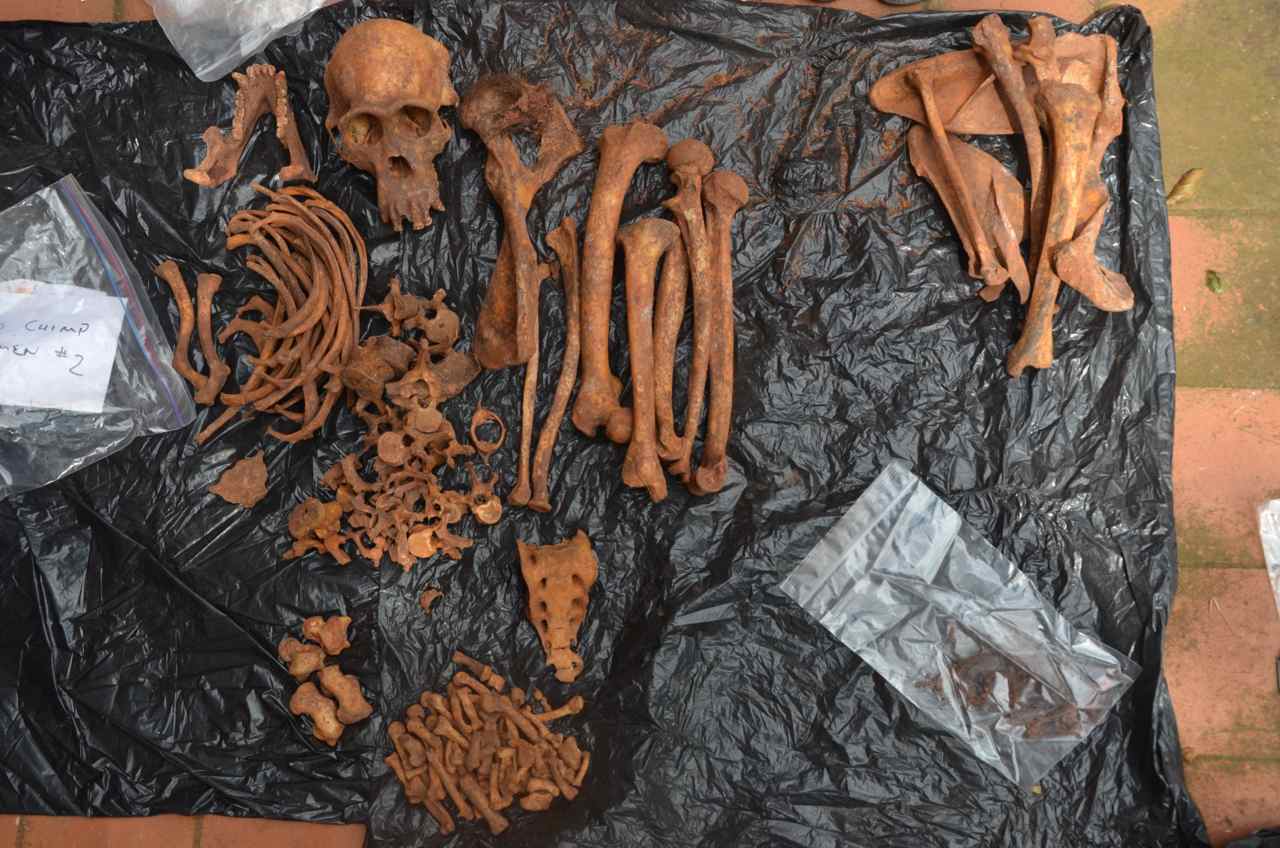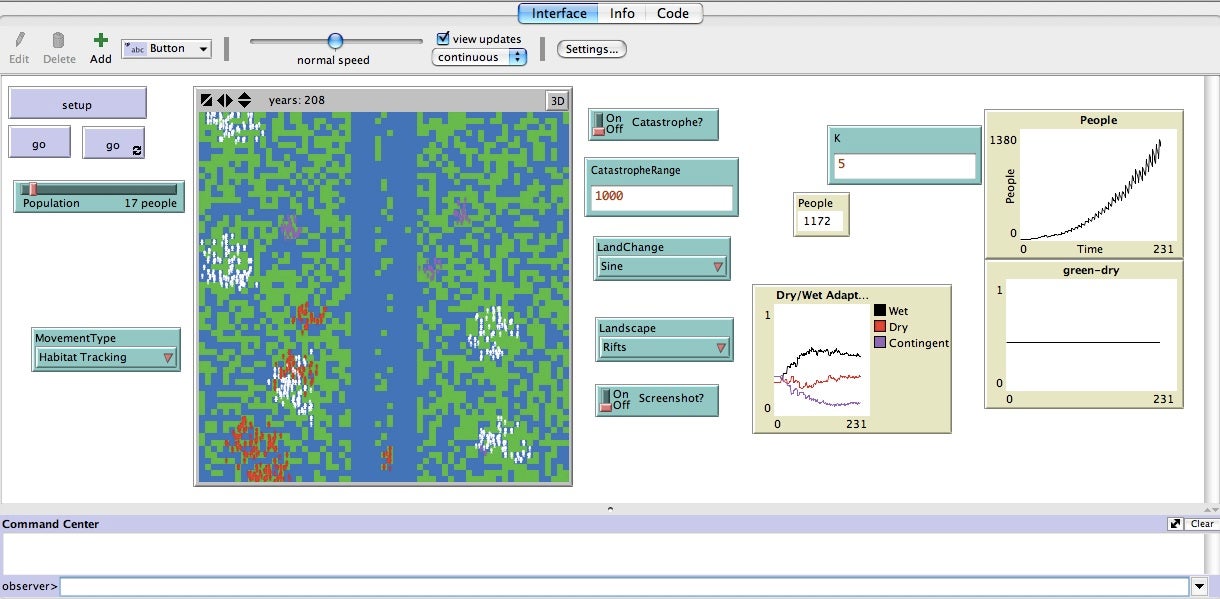Research in the Baringo Basin, Kenyan Rift Valley
Detailed paleoenvironmental work in the Tugen Hills Succession has revealed short-term, oscillating environmental conditions 2.7 to 2.55 million years ago which has been linked to short-term Milankovitch environmental fluctuations. These data revealed detailed links between local environmental fluctuations to orbitally forced changes in precipitation/evaporative regimes and seasonality patterns related to globally documented 23 ka cyclical changes in the the geometry of the earth’s orbit, Dansgaard Oescher cycles, and annual seasonality. The implication for paleoanthropology is that the environment, and by extension the adaptive landscape, of early hominins was far from constant and is instead being paced by dynamic, oscillating environment shifts rather than a gradual change in climate through evolutionary time. Data collected is currently being analyzed, including identification of climatic forcing at various intervals of time relevant to human evolution, assessing shifting patterns of fossil faunal communities in this framework of oscillating climate and ecology, and tracking varying foraging strategies of specific mammalian faunal lineages as a result of climatic change.
Hominin Site Paleolake Drilling Project (HSPDP)

HSPDP drilling through 2.4 to 3.5 Ma fossil-bearing sediments adjacent to the Barsemoi River in the foothills of the Tugen Hills, Baringo Basin, Kenya.
Focusing on five basins in East Africa, the HSPDP has been drilling ‘terrestrial’ cores at strategic hominin sites in Ethiopia and Kenya, to collect high-resolution data comparable to deep sea cores. These cores are being analyzed to provide environmental profiles that can be compared between basins to develop a regional profile over the past 3.5 milllion years. Geochemical analyses of these cores will supply relevant data about climate change utilizing TEX86 and clumped isotope paleothermometry, as well as geochemical and lithologic archives that record relevant aspects of the paleoclimate system. Geochemical analyses will be complemented by the paleoecological analyses of pollen, charcoal, diatoms, ostracodes and other biological materials, that collectively provide a record of water resources (quantity and quality) and landscape resources and conditions (vegetation, fire) upon which local hominins would have relied.
Environmental context of hominoid fossil communities at Napak and Moroto, Uganda

Robert Kityo prospecting for Early Miocene fossils at Napak I at Akism, Uganda. Site IX higher is on the slope above stratigraphically below aggolomerate capping the ridge.
In collaboration with Laura MacLatchy and the REACHE (Research into East African Catarrhine and Hominoid Evolution) project, I am involved in establishing the paleoecology, taphonomy, geochronology, and stratigraphy of early Miocene fossil ape and monkey localities in Eastern Uganda. My participation in ongoing research at these sites is focusing on establishing the environmental context and diets of hominoids specifically but to also document environmental correlates between the early stages of a transition from archaic to more modern East African faunal communities. Included in this transition is the earliest recorded diversification of the hominoid clade, as exemplified by the taxa Morotopithecus and Proconsul.
Isotopic Studies of modern East African Hominoid Ecosystems
I have also recognized a need to bridge theories and strategies in investigating hominin paleoecology and evolution with the study of modern ecology and community dynamics. Interpreting empirical paleoecologic data and developing models relies heavily on modern analogs and our understanding of the cycling and significance of ecological proxies in extant tropical ecosystems remains limited. Analyses of modern materials not only provide a perspective for interpreting analytical results of fossil material but also provide direction for the types of substrates to be analyzed, spatial and temporal levels of resolution required to characterize paleoecology, and the types of information that can be inferred from biogeochemical analyses. Aspects of early diet including foraging strategies, physiology, nutrition, environmental constraints, and resource availability in early hominin vertebrate communities are ultimately key foci in this effort. In attempting to achieve these goals, I have expanded the temporal range of the problems I’m exploring to include modern habitats in Uganda, Tanzania, and Kenya, in part to test the integrity of extending biochemical models into the past and examining dietary biomarkers in conjunction with skeletal assessments of health and nutrition.
Agent-based modeling of hominin response to environmental change
As we recognize the need to dramatically increase the resolution in developing causal links between environmental factors and evolutionary innovations in the human lineage, it is becoming apparent that we are limited by the fragmentary hominin fossil record. Recognizing and characterizing key lines of evidence is essential and in this regard an ongoing goal is to explore the use of agent-based models to understand potentially relevant and interacting environmental and evolutionary components. I am currently using programs such as NetLogo, a multi-agent programmable modeling environment, to simulate potential response of early hominins and their vertebrate communities to abiotic perturbations in aspects of their environment. More specifically, I’m attempting to assess the complex interaction between variable hominin strategies, including habitat tracking, eclectic and flexible feeding strategies, physiological and behavioral plasticity, and in-situ evolution.






